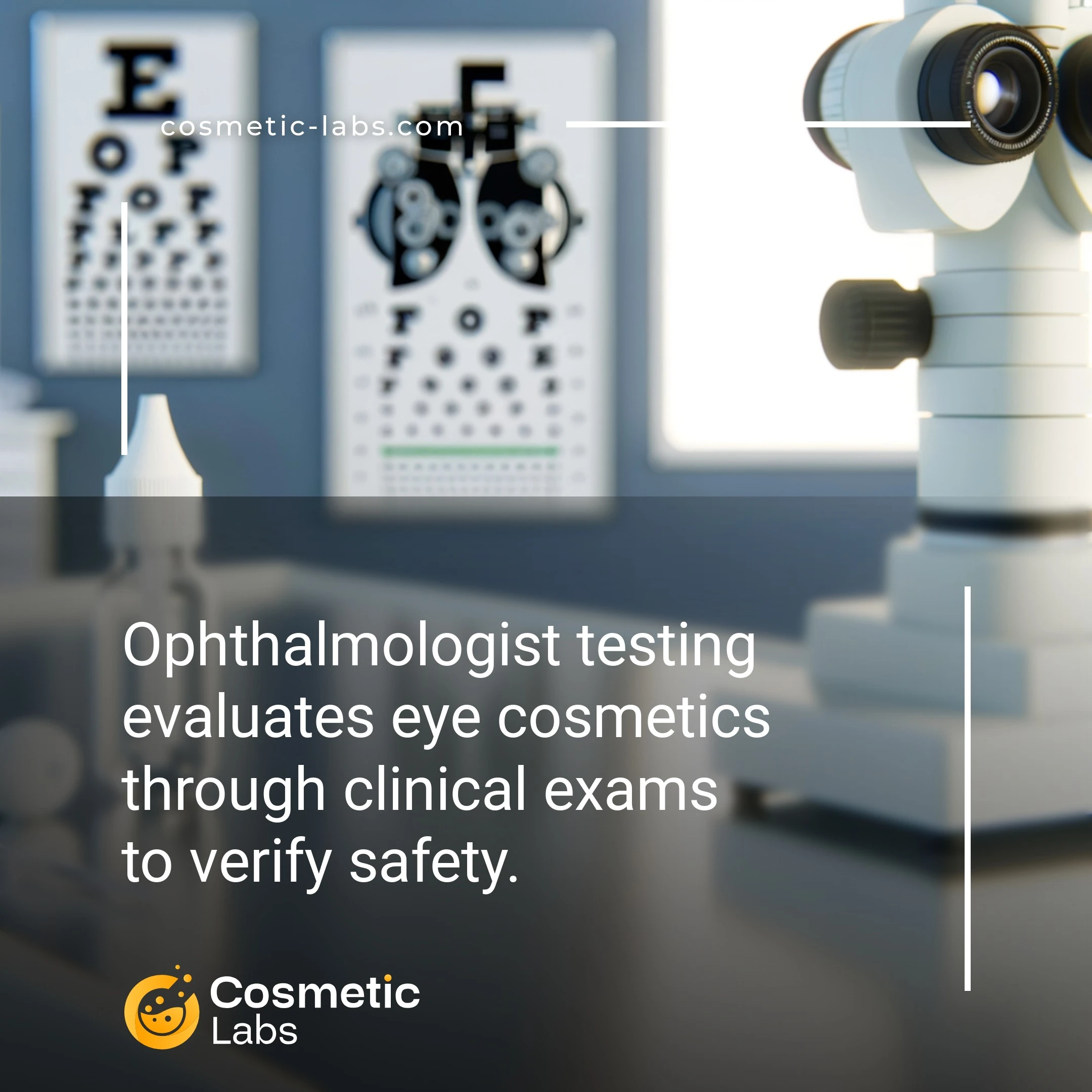Ophthalmologist Eye Safety Testing for Cosmetic Products

What is Ophthalmologist testing?
Ophthalmologist testing for eye product safety is a specialized clinical assessment where licensed eye doctors evaluate cosmetic products like mascaras, eyeliners, and eye creams for potential irritation or allergic reactions. Our partner labs coordinate these tests with board-certified ophthalmologists who apply products to volunteer subjects under controlled conditions, monitoring for redness, swelling, or discomfort over 24-48 hours. This medical validation provides the clinical data you need to support safety claims and meet regulatory requirements for eye-area cosmetics.
Why do you need this service?
Cosmetic labs conduct ophthalmologist-supervised eye irritation testing to validate mascara, eyeliner, and eyeshadow formulations before market launch. These clinical evaluations assess tear film stability, corneal staining patterns, and conjunctival reactions using standardized protocols, delivering regulatory-compliant safety documentation that supports product claims and reduces liability risks for beauty brands entering competitive markets.
Who provides Ophthalmologist testing services?
All cosmetic labs providing Ophthalmologist testing services
There is no company providing these services at the moment.
Ophthalmologist Testing for Eye Product Safety
Eye area cosmetics require specialized medical evaluation to prevent irritation, allergic reactions, and potential vision damage. Ophthalmologist testing provides the clinical validation needed for mascara, eyeliner, eye shadow, and other periocular products before market launch.
Clinical Eye Safety Protocols
Board-certified ophthalmologists evaluate your products through controlled patch testing and ocular irritation studies. These tests measure tear film stability, conjunctival response, and corneal integrity after product application.
Standard testing protocols include:
- Draize eye irritation tests with modified scoring systems
- Human repeat insult patch tests (HRIPT) for sensitization
- Ophthalmoscopic examinations for deeper tissue effects
- Photosensitivity assessments under UV exposure
Results typically arrive within 4-6 weeks, providing documented proof of safety for regulatory submissions.
Regulatory Documentation and Claims Support
Ophthalmologist testing generates the clinical data required for “ophthalmologist-tested” claims on product packaging. This medical validation supports FDA compliance and international market entry requirements.
Testing reports include:
- Detailed irritation scores and photographic documentation
- Statistical analysis of adverse reactions
- Professional recommendations for formula modifications
- Certification letters for marketing claims
Labs on our platform connect you with certified ophthalmologists who understand cosmetic industry standards. Contact a testing partner today to discuss your eye product safety requirements and timeline.
Applications of Ophthalmologist Testing for Eye Product Safety
Cosmetic labs provide ophthalmologist testing for eye product safety to validate formulations before market launch and protect brands from liability issues.
Pre-Market Safety Validation for Eye-Area Cosmetics
Eye makeup, serums, and treatments require ophthalmologist evaluation to assess irritation potential and tear film compatibility. Labs coordinate with board-certified ophthalmologists who perform controlled application tests using standardized protocols like the Draize eye irritation test or modified versions.
Testing typically involves 10-20 participants over 7-14 days, with ophthalmologists monitoring for conjunctival redness, corneal staining, and tear production changes. Results generate safety dossiers that support product claims and regulatory submissions. Brands receive detailed reports within 3-4 weeks including photographic documentation and professional recommendations.
Post-Market Surveillance and Reformulation Support
When consumer complaints arise about eye irritation, labs arrange ophthalmologist assessments to investigate formulation issues. Clinical evaluations help identify problematic ingredients like preservatives, fragrances, or pH imbalances that cause adverse reactions.
Ophthalmologists perform comparative testing between original and reformulated products, measuring parameters like break-up time and Schirmer test results. This data guides ingredient substitutions and concentration adjustments. Testing protocols can detect irritation differences as small as 0.5 pH units, enabling precise formulation optimization.
| Test Type | Duration | Participants | Key Measurements |
|---|---|---|---|
| Acute Irritation | 24-72 hours | 10-15 | Conjunctival redness, tearing |
| Cumulative Irritation | 7-14 days | 15-20 | Corneal staining, pH changes |
| Compatibility Testing | 21-28 days | 20-25 | Tear film stability, comfort scores |
Connect with experienced cosmetic labs on our platform to arrange ophthalmologist testing services for your eye product formulations.
